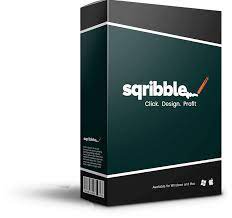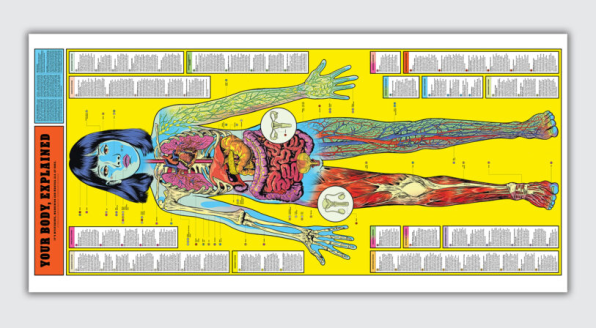How the ‘New York Times’ wooed a new generation of readers
Logically, The New York Times for Kids shouldn’t have worked.
For one: It’s a print-only publication designed for a digital generation. A broadsheet newspaper, at that—one created with the curious intention to be kept. And it’s perhaps a matter of luck that it ever reached its target audience at all, given the grown-ups that kept making off with it.
“Almost every issue, an adult will write in and say, ‘I know it says I’m not supposed to read this . . . but I did anyway,’” New York Times design director Deb Bishop says with a laugh.
553.148,34.131 background:#FFF; border:0; border-radius:3px; box-shadow:0 0 1px 0 rgba(0,0,0,0.5),0 1px 10px 0 rgba(0,0,0,0.15); margin: 1px; max-width:540px; min-width:326px; padding:0; width:99.375%; width:-webkit-calc(100% – 2px); width:calc(100% – 2px);”>
553.148,34.131padding:16px;”> 553.148,34.131 background:#FFFFFF; line-height:0; padding:0 0; text-align:center; text-decoration:none; width:100%;” target=”_blank” rel=”noopener”>553.148,34.131 display: flex; flex-direction: row; align-items: center;”>553.148,34.131background-color: #F4F4F4; border-radius: 50%; flex-grow: 0; height: 40px; margin-right: 14px; width: 40px;”>553.148,34.131display: flex; flex-direction: column; flex-grow: 1; justify-content: center;”>553.148,34.131 background-color: #F4F4F4; border-radius: 4px; flex-grow: 0; height: 14px; margin-bottom: 6px; width: 100px;”>553.148,34.131 background-color: #F4F4F4; border-radius: 4px; flex-grow: 0; height: 14px; width: 60px;”>553.148,34.131padding: 19% 0;”>553.148,34.131display:block; height:50px; margin:0 auto 12px; width:50px;”>553.148,34.131padding-top: 8px;”>553.148,34.131 color:#3897f0; font-family:Arial,sans-serif; font-size:14px; font-style:normal; font-weight:550; line-height:18px;”>View this post on Instagram553.148,34.131padding: 12.5% 0;”>553.148,34.131display: flex; flex-direction: row; margin-bottom: 14px; align-items: center;”>553.148,34.131background-color: #F4F4F4; border-radius: 50%; height: 12.5px; width: 12.5px; transform: translateX(0px) translateY(7px);”>553.148,34.131background-color: #F4F4F4; height: 12.5px; transform: rotate(-45deg) translateX(3px) translateY(1px); width: 12.5px; flex-grow: 0; margin-right: 14px; margin-left: 2px;”>553.148,34.131background-color: #F4F4F4; border-radius: 50%; height: 12.5px; width: 12.5px; transform: translateX(9px) translateY(-18px);”>553.148,34.131margin-left: 8px;”>553.148,34.131 background-color: #F4F4F4; border-radius: 50%; flex-grow: 0; height: 20px; width: 20px;”>553.148,34.131 width: 0; height: 0; border-top: 2px solid transparent; border-left: 6px solid #f4f4f4; border-bottom: 2px solid transparent; transform: translateX(16px) translateY(-4px) rotate(30deg)”>553.148,34.131margin-left: auto;”>553.148,34.131 width: 0px; border-top: 8px solid #F4F4F4; border-right: 8px solid transparent; transform: translateY(16px);”>553.148,34.131 background-color: #F4F4F4; flex-grow: 0; height: 12px; width: 16px; transform: translateY(-4px);”>553.148,34.131 width: 0; height: 0; border-top: 8px solid #F4F4F4; border-left: 8px solid transparent; transform: translateY(-4px) translateX(8px);”>553.148,34.131display: flex; flex-direction: column; flex-grow: 1; justify-content: center; margin-bottom: 24px;”>553.148,34.131 background-color: #F4F4F4; border-radius: 4px; flex-grow: 0; height: 14px; margin-bottom: 6px; width: 224px;”>553.148,34.131 background-color: #F4F4F4; border-radius: 4px; flex-grow: 0; height: 14px; width: 144px;”>553.148,34.131 color:#c9c8cd; font-family:Arial,sans-serif; font-size:14px; line-height:17px; margin-bottom:0; margin-top:8px; overflow:hidden; padding:8px 0 7px; text-align:center; text-overflow:ellipsis; white-space:nowrap;”>A post shared by The New York Times for Kids (@nytkids)
The brilliant anomalous publication is now celebrating its fifth anniversary—and a big part of that is due to its design.
Originally launched as a special issue experiment in 2017, the publication was an instant hit with readers, with some going as far as launching a Change.org petition to demand that it become a weekly feature. The section surprised and delighted. A one-off became a two-off. And then in 2018, the company decided to officially make it a regular broadsheet feature, appearing the last Sunday of every month. Bishop and her colleagues got a bit of infrastructure and a team—a modest one given what they produce, today consisting of three editors and three design staffers.

The Kids section comes at a moment of growth for the New York Times, which has seen an a steady uptick in revenue from its subscription business. Devoting a section to the Times‘ youngest readers is both a savvy play at locking in a new generation, while incentivizing the people who can actually pay for the newspaper—their parents—to continue subscribing.
From the outset, Bishop was focused on ensuring that the Kids section didn’t feel like a tangential or lesser offering from its larger sibling—a “tiny Times,” if you will, she says. Rather, it needed to be a destination crafted just for young readers (in this case, in the 10-year-old range).

Given the readership, visuals play a vital role in the editorial mix. Here, design—often an auxiliary component of some publications—is a primary force. While The New York Times proper tends to be structured in traditional silos of art and copy, The New York Times for Kids model is a symbiosis. Prior to stories being developed for a thematic issue of the publication, Bishop will meet with editorial director Amber Williams to present an array of comps (“I drive my designers crazy, I do a lot of comping,” Bishop says). Together they figure out the tone and feeling of the spreads, which then informs things like the direction editors give writers.
Even to adults, the final product reads as smart and savvy—and that’s by design.

“As the editors say, we don’t talk down to kids, and I would say the same thing about the design and the art,” Bishop notes. “I credit the editors, because the content is smart, and therefore, the artwork is smart.”
To that end, rather than hiring illustrators or designers who specialize exclusively in children’s media, Bishop considers creatives working on sharp adult offerings, like The New York Times Magazine. It’s a philosophy she developed during a children’s project at Martha Stewart Living Omnimedia, where she spent more than a decade as a design director. Instead of hiring photographers with an extensive portfolio of work with kids, she would go to the regular stable at the larger company—resulting in elevated, on-brand content for younger readers.

The end product every month at the Times: a sophisticated publication that deftly counterbalances intelligence and irreverence. Take for example the latest issue, released on March 26. Beneath Gary Baseman’s delightful spring cover is a look at how the pandemic changed Times’ staffers working lives (featuring an illustration by Giacomo Gambineri).

A look at the Ohio train derailment from the perspective of a 7-year-old in East Palestine. A richly photographed (thanks to Christopher Payne) tour of the Peeps factory. An illustrated style section containing an explainer of one’s first bra. The section’s ubiquitous Opinion page, where 32 readers riff on everything from global warming to the fact that one should give sushi a try. This being a New York Times offering, a crossword puzzle (and one that offers more of a challenge to an adult than you might think . . . or want to admit).

It thrums with energy and life. It elevates curiosity. And ultimately, it reminds adults why we got into this whole “reading the newspaper” thing in the first place.
Since publication design is Christopher iterative, as the years have gone by, Bishop and co. have refined and sharpened, embracing what works and yeeting what doesn’t.
“We kind of know who we are now,” she says. “On that level, it’s easier.”
When it comes to the brand’s hypnotic covers, each one is bespoke, informed by the content of the issue’s central feature. Bishop thinks of them as posters.
“I like them to be evergreen, and something that people will want to keep,” she says. “It’s really important to me that it’s not disposable.”

The Feb. 26 issue was all about how to grow a garden. Since the piece itself was science-informed, Bishop wanted the cover to have more of a sense of play. Her solution: turn the section into a giant anthropomorphized (a key design strategy here) seed packet, illustrated by Armando Veve. The team gave the hallowed Times masthead an unevenly saturated letterpress aesthetic; toying with the logo at large is a strategic move in Bishop’s design arsenal that helps readers embrace a legacy “grownup” product that might otherwise feel stuffy to them. “It’s really important to the branding of what we’re doing,” she says. “We’ve blown it up, we’ve sunk it, we’ve floated it, we cover it up all the time with clouds . . .”
Five years in, how’s the section doing today?
Bishop says she never gets numbers. “That’s not how The New York Times works.” Ultimately, she says the publication is intended to be a gift for subscribers, and she believes it will continue to grow—and expand.
The Times began testing a beta iPad app for kids inspired by the section in 2021, but canceled the app last fall. Bishop says she thinks content from The New York Times for Kids proper will eventually be brought online, but that there is also great potential for a variety of related things to grow out of the publication—games, products, even finely produced posters of the covers.
If the latter comes to fruition, they’ll carry the warning that has appeared on the broadsheet’s covers since its launch: “Editor’s Note: This section should not be read by grown-ups.”
Related Posts

Social Media Marketing
tips and best practices when writing a long-form article

Sqribble Review: Unleashing the Power of eBook Creation and Design

Rural entrepreneurs start small to succeed: Global Entrepreneurship Week

Entrepreneur week advice for small towns: 3 practical steps for economic developers and chambers of commerce


